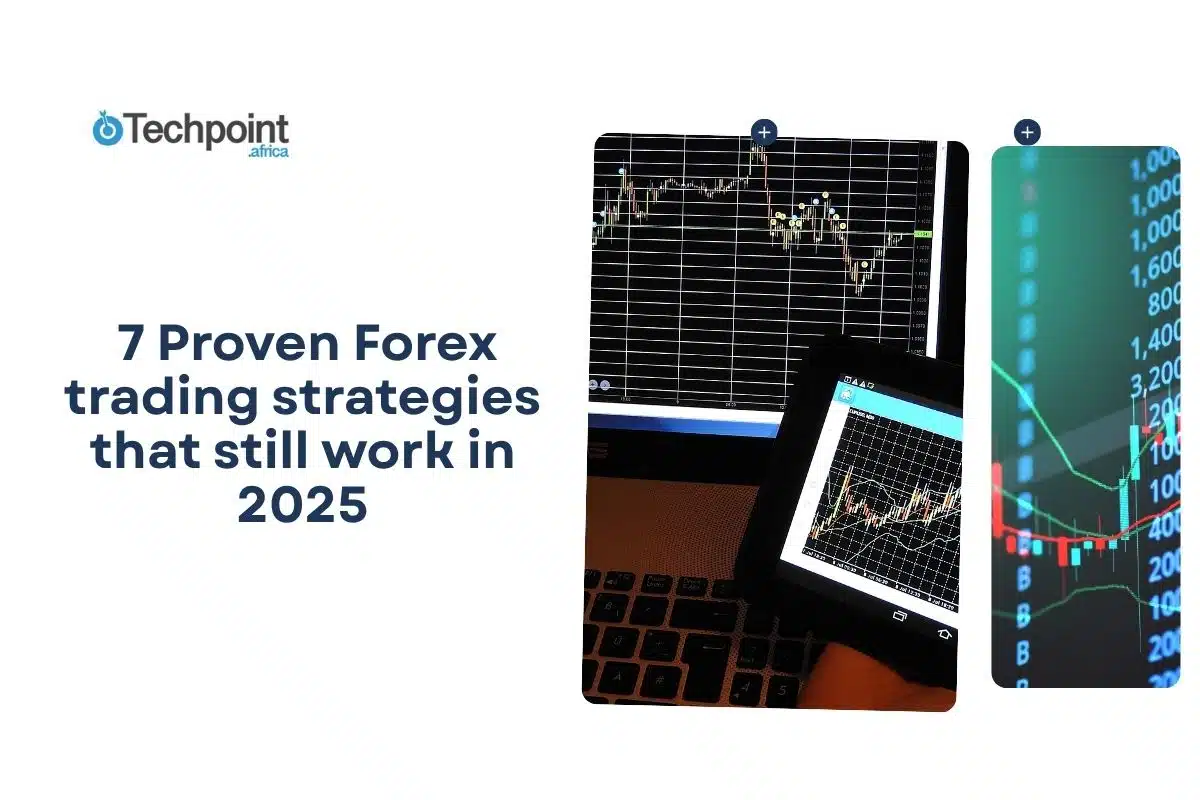When discussing the richest countries in Europe, nations like the United Kingdom, Germany, and France often top the conversation due to their global recognition. However, the subject extends beyond these three. While some countries boast thriving financial markets, others rely on rich natural reserves or high living standards. But which country is truly the richest? The answer isn’t as simple as it seems.
A few days ago, a friend read my piece on the richest country in South America and was surprised. The article didn’t just inform him, it completely shifted his perspective. That reaction made me reflect on how easily we rely on popular assumptions when it comes to wealth and influence. Determined not to be surprised again, he requested a similar article on Europe, unaware that it’s already a work in progress.
Are you just like my friend? Curious, maybe a little skeptical? Then let’s discuss the richest countries in Europe using different criteria.
Europe has a population of over 742 million, making it the world’s third-largest continent in terms of population. While the continent’s share of global GDP has steadily declined in recent decades, a trend expected to continue as other regions expand their economies, it remains a hub for high-value industries, including advanced manufacturing, the green transition, and digital and financial services, ensuring its continued influence in the global economy.
This article provides an in-depth analysis using key criteria such as Gross Domestic Product (GDP), quality of life, economic stability, the Human Development Index (HDI), and GDP per capita, in an attempt to offer a diverse and comprehensive overview.
Key Takeaway
- The subject of the wealthiest countries in Europe extends beyond mere global recognition. Criteria like Gross Domestic Product (GDP), quality of life, economic stability, the Human Development Index (HDI), and GDP per capita are very important.
- This article highlights that the concept of “rich” in Europe is multifaceted, with each country excelling in different areas.
- Germany stands out as Europe’s economic powerhouse due to its total GDP, while Luxembourg leads in GDP per capita.
- Switzerland ranks highest in terms of human development, further illustrating the diverse ways in which wealth is measured across Europe.
Top 10 wealthiest countries in Europe by GDP
| Rank | Country | GDP (US$) |
| 1 | Germany | $4.59 trillion |
| 2 | United Kingdom | $3.50 trillion |
| 3 | France | $3.13 trillion |
| 4 | Italy | $2.33 trillion |
| 5 | Russia | $2.06 trillion |
| 6 | Spain | $1.65 trillion |
| 7 | Netherlands | $1.14 trillion |
| 8 | Switzerland | $938.46 billion |
| 9 | Poland | $844.62 billion |
| 10 | Belgium | $655.19 billion |
Note: While Russia spans two continents, it’s considered European since most of its population lives in the western, European part. According to WorldAtlas, approximately 77% of Russia’s 145 million citizens reside in its European portion, including major cities like Moscow and St. Petersburg.
Germany
- Population: 84,075,075
- GDP: $4.59 trillion
- GDP per capita: $54,290
- HDI score: 0.950
- Life expectancy: 81.54
- Quality of life: 190.2
- Innovation index score: 58.1
- Economic drivers: automotive industry, machinery and equipment manufacturing, chemical and pharmaceutical industries, financial services, information technology, tourism, and a highly skilled labor force.
With a population slightly above 84 million and a GDP of $4.59 trillion, Germany is the richest country in Europe by GDP. The country is located in the western region of Central Europe and is the second-most populous country in Europe after Russia. Germany is known for its industrial strength, particularly in the automotive, machinery, and chemical sectors. It also boasts a strong service sector, with a significant focus on financial services, IT, and tourism.
Germany is the world’s third-largest exporter and the top exporter within the European Union, with major exports including vehicles, machinery, chemicals, and household goods. Its economy is heavily influenced by global trade, and in recent years, there has been a noticeable shift toward greener production methods and the adoption of digital technologies in the manufacturing sector.
United Kingdom
- Population: 69,551,332
- GDP: $3.50 trillion
- GDP per capita: $51,070
- HDI score: 0.940
- Life expectancy: 81.45
- Quality of life: 174.5
- Innovation index score: 61
- Economic drivers: manufacturing, financial services, creative industries, education, and tourism.
The United Kingdom is the second-richest European country by GDP. The country’s economy was the sixth-largest in the world in 2024, behind the United States, China, Japan, Germany, and India. However, in early 2025, the UK’s economic growth forecast for the year was downgraded from 2% to 1%, with external factors such as increased geopolitical instability and the threat of a global trade war among the main reasons for this revision.
According to the U.K. Office for National Statistics (ONS), the services sector is the largest sector in the UK, accounting for 80% of gross value added (GVA), a measure of economic output similar to GDP. The service industry includes finance, business services, retail, food, and entertainment. Manufacturing and construction contribute around 10% and 6%, respectively, while agriculture accounts for about 0.67%.
France
- Population: 66,650,804
- GDP: $3.13 trillion
- GDP per capita: $47,360
- HDI score: 0.910
- Life expectancy: 83.46
- Quality of life: 166.3
- Innovation index score: 55.4
- Economic drivers: service sector, agriculture, and tourism.
France is one of the major economic powers in the world, ranking alongside countries such as the United States, Japan, Germany, Italy, and the United Kingdom. With a GDP of $3.13 trillion, the country is among the richest in Europe. France’s economy has a mixed structure, with a significant presence of both private and state-owned enterprises. Key sectors include manufacturing, particularly in automation, aerospace, and luxury goods; services such as tourism and finance; and a robust agricultural sector, renowned for its wine and dairy products.
Recently, the Bank of France cut its 2025 GDP growth forecast from 1.2% to 0.9%, citing political uncertainty and global instability. However, the country’s economic growth is expected to rebound to 1.3% in 2026 and 2027, with consumers benefiting from wages rising faster than inflation.
Italy
- Population: 59,146,260
- GDP: $2.33 trillion
- GDP per capita: $39,580
- HDI score: 0.906
- Life expectancy:
- Quality of life: 83.87
- Innovation index score: 45.3
- Economic drivers: Services Sector, manufacturing industry and agriculture
According to Statista, Italy is the tenth largest economy in the world, the fourth-largest in Europe, and one of the main export countries worldwide. The country’s top export industry is machinery and equipment, followed closely by textiles, clothing, leather goods, and accessories. It is the world’s leading exporter of leather products. Italian GDP is expected to grow by 0.5% in 2024 and 0.8% in 2025.
Russia
- Population: 143,997,393
- GDP: $2.06 trillion
- GDP per capita: $14,390
- HDI score: 0.821
- Life expectancy: 73.34
- Quality of life: 116.6
- Innovation index score: 29.7
- Economic drivers include agriculture, industry, and services.
With a population of over 143 million, Russia is the most populous country in Europe and the ninth globally. Russia’s economy relies on its vast natural resources, particularly energy. It is one of the world’s largest oil and natural gas producers, which are major contributors to its GDP and export earnings. This reliance makes its economy vulnerable to fluctuations in global commodity prices.
The country’s GDP also benefits from sectors like agriculture, industry, and services. The agricultural sector accounts for about 5.6% of GDP, while industry and services make up 26.6% and 67.8%, respectively.
Richest countries in Europe by GDP Per Capita
The richest countries in Europe, ranked by GDP per capita (PPP), may not always be the largest or most populous. However, they consistently stand out for their economic resilience and strategic planning. These nations have built powerful economies through diversification, international trade, and innovation.
What they lack in size, they make up for with specialized industries, ranging from financial services and pharmaceuticals to advanced technology, supported by strong welfare systems and world-class infrastructure.
Below is a closer look at the top 10 wealthiest countries by GDP per capita (PPP), as projected for 2025 by World Atlas.
| Rank | Countries | GDP per Capita (PPP, 2025) |
| 1 | Luxembourg | $154,914 |
| 2 | Ireland | $131,548 |
| 3 | Norway | $106,540 |
| 4 | Switzerland | $98,144 |
| 5 | Denmark | $85,788 |
| 6 | Netherlands | $83,822 |
| 7 | San Marino | $82,578 |
| 8 | Iceland | $80,318 |
| 9 | Malta | $75,821 |
| 10 | Belgium | $75,187 |
Luxembourg
- Population: 680,453
- GDP per capita: $154,914
- Main industries: banking, steel, and industrial sectors.
In the opening paragraphs, I mentioned that the wealthiest countries in Europe go beyond population and global recognition. An instance is Luxembourg. It is a small, landlocked country surrounded by Germany, France, and Belgium. It is one of the world’s smallest countries and has a population of around 680,453 people according to WorldMeter. Luxembourg has one of the highest population growth rates globally, driven largely by expatriates, who make up more than half of its residents.
Luxembourg’s economy is driven by a world-class financial sector, known for its international fund administration and strong banking infrastructure. The ICT industry is also thriving, with key players like SES and a growing focus on cloud services, e-payments, and digital innovation under the Digital Lëtzebuerg initiative.
Other major industries include steel, which remains important despite global shifts; tourism, which significantly contributes to GDP and employment; and agriculture, where dairy farming is the leading sector, covering over 126,000 hectares of farmland. These sectors reflect the country’s blend of modern services and productive traditional industries.
Over the decade leading to 2024, Luxembourg maintained steady economic indicators: an average annual GDP growth rate of 2.3%, a fiscal surplus of 0.9% of GDP, unemployment at 5.9%, and inflation at 2.1%.
Ireland
Population: 5,308,039
GDP per Capita: $131,548
Main Industries: Manufacturing, export, and trade.
In 2025, Ireland ranks as the second-richest country in Europe, with a GDP per capita of around $131,548 (PPP). High-tech industries, pharmaceuticals, software, financial services, and agribusiness drive its advanced, knowledge-based economy. The country leads globally in attracting high-value foreign direct investment due to favorable tax policies. However, recent global reforms have challenged this model.
Ireland is a key global player in the technology and pharmaceutical industries, hosting major firms such as Apple, Google, Pfizer, and Facebook. These sectors drive exports and employment, though Ireland’s dependence on multinational corporations poses risks, especially if global tax reforms or regulatory changes reduce its attractiveness as an investment destination.
The country enjoys strong exports, low public debt (44.7% of GDP), and a positive budget balance. It experienced a rise in inflation between October 2020 and October 2022, with the consumer price index increasing from -1.5% to a peak of 9.2% before gradually falling to 3.4% by February 2023, mainly driven by surging food and energy costs.
According to the European Commission, Ireland’s GDP was expected to decline by 0.5% in 2024, mainly due to a contraction in the multinational sector in the first half of the year. Economic activity is projected to rebound with growth of 4.0% in 2025 and 3.6% in 2026, supported by a strong labour market, low headline inflation, and a favorable external environment.
Norway
Population: 5,623,071
GDP per Capita: $106,540
Main Industries: Oil and gas, agriculture, industry, and services
Norway is also one of the wealthiest countries based on GDP per capita. This can be attributed to its vast oil and gas reserves. The country is Western Europe’s largest oil producer, with revenues from hydrocarbons fueling a large sovereign wealth fund, the Government Pension Fund Global—the largest of its kind. This financial cushion allows Norway to maintain high public spending and economic stability.
The country maintains a robust mixed economy, marked by significant state ownership in strategic sectors such as oil and natural gas, which contributes to a GDP of $506.47 billion nominally and $597.42 billion in purchasing power parity (PPP). Its GDP per capita stands impressively at $90,320 nominally and $106,540 in purchasing power parity (PPP), securing high ranks of 4th and 3rd in Europe, respectively. The economy is diversified across agriculture (1.6%), industry (34.7%), and services (63.5%), reflecting a balanced economic structure.
While oil and gas remain dominant, Norway is investing heavily in renewable energy, particularly hydropower and offshore wind. The country has ambitious decarbonization goals, positioning itself as a leader in green energy solutions. According to a 2022 International Energy Agency report, Norway has an almost entirely renewables-based electricity system, with renewable resources accounting for 98% of generation in 2020, of which hydro is the dominant source at 92%
Switzerland
Population: 8,967,407
GDP per Capita: $98,144
Main Industries: Service sector, agriculture, industry, and the financial sector
As one of the top five richest countries in Europe based on GDP per capita, Switzerland boasts one of the world’s most advanced and stable economies, attributed to strong institutions, a skilled labor force, prudent fiscal policies, an independent monetary framework led by the Swiss National Bank, and close collaboration between academia and industry. The country is home to prestigious institutions such as ETH Zurich and EPFL, which drive advancements in science and technology.
Over the decade leading to 2024, Switzerland recorded an average annual GDP growth of 1.9%, a fiscal surplus of 0.2% of GDP, an unemployment rate of 2.8%, and low average inflation at 0.6%. The country has one of the lowest VAT rates in Europe. VAT at a rate of 8.1% is payable on most goods and services. A reduced rate of 3.8% is levied on accommodation services, while 2.6% applies to everyday items.
For the country, economists at the Swiss Economic Institute (KOF) forecast real GDP growth of 1.4% in 2025 and 1.6% in 2026.
Denmark
Population: 6,002,507
GDP per Capita: $85,788
Main Industries: Agriculture, tourism, energy, and manufacturing
With a GDP per capita of $85,788, Denmark boasts one of the strongest and most resilient economies in Europe, characterized by a high standard of living and effective fiscal management. The country benefits from a well-diversified economy, with key industries including pharmaceuticals, renewable energy, advanced manufacturing, and shipping. Denmark’s strong export sector is driven by companies such as Maersk (shipping), Novo Nordisk (pharmaceuticals), and Vestas (wind energy).
From 2013 to 2023, Denmark recorded an average annual GDP growth of 2.2%, a fiscal surplus of 1.6% of GDP, an unemployment rate of 3.8%, and an average inflation rate of 1.7%. Its real GDP is forecast to grow by 2.4% in 2024 and 2.5% in 2025 before moderating to a rate of 1.8% in 2026.
Top European countries ranked by Human Development Index (HDI)
The HDI in Europe is measured based on factors including life expectancy, educational attainment, and income level. It aims to measure not only incomes but life quality as well.
Below is the list of the top European countries ranked by the human development index (HDI):
| Countries | Human Development Index (HDI) |
| Switzerland | 0.967 |
| Norway | 0.966 |
| Iceland | 0.959 |
| Sweden | 0.952 |
| Denmark | 0.952 |
Switzerland
Human development index: 0.967
Human development classification: Very high
Switzerland tops the European countries with the highest human development index score (0.967), putting the country in the very high human development category—positioning it at 1 out of 193 countries and territories. Between 1990 and 2022, Switzerland’s HDI value increased from 0.850 to 0.967, a 13.8% change.
In the same period, Switzerland’s life expectancy at birth increased by 6.9 years, the expected years of schooling changed by 3.1 years, and the mean years of schooling changed by 3.4 years. Switzerland’s GNI per capita changed by about 21.1% between 1990 and 2022.
In 2023, Switzerland’s poverty rate, or the share of the population at risk of poverty, was 8.1%, meaning that roughly 1 in 12 residents lived below the poverty line.
Norway
Human development index: 0.966
Human development classification: Very High
Norway’s HDI value for 2022 is 0.966, putting the country in the Very High human development category—positioning it at 2 out of 193 countries and territories. Between 1990 and 2022, Norway’s HDI value increased from 0.845 to 0.966, a 14.3% change.
Within the same period, Norway’s life expectancy at birth increased by 6.8 years, the expected years of schooling changed by 4.6 years, and the mean years of schooling changed by 1.9 years. Norway’s GNI per capita changed by about 67.5% between 1990 and 2022.
While Norway is a wealthy country, it’s important to note that poverty exists, with the national poverty headcount ratio being around 12.6% in 2020 and 12.2% in 2021.
Iceland
Human development index: 0.959
Human development classification: Very High
Iceland is also among the European countries with the highest Human Development Index (HDI) value. Its HDI value as of 2022 is 0.959, which places the country in the Very High human development category, ranking it 3rd out of 193 countries and territories. Between 1990 and 2022, Iceland’s HDI value increased from 0.834 to 0.959, a 15.0% change.
In the same period, Iceland’s life expectancy at birth changed by 4.7 years, expected years of schooling changed by 5.0 years, and mean years of schooling changed by 3.3 years. Iceland’s GNI per capita changed by about 68.2 percent between 1990 and 2022.
In 2023, the at-risk-of-poverty rate stood at 9.0%, equating to about 35,000 individuals.
Sweden
Human development index: 0.952
Human development classification: Very High
Sweden’s HDI value for 2022 is 0.952, putting the country in the Very High human development category. This positions the country at 5 out of 193 countries and territories.
Between 1990 and 2022, Sweden’s HDI value changed from 0.808 to 0.952, a change of 17.8%.
Between 1990 and 2022, Sweden’s life expectancy at birth increased by 5.9 years, the expected years of schooling changed by 6.1 years, and the mean years of education changed by 3.1 years. Sweden’s GNI per capita changed by about 70.4% between 1990 and 2022.
In 2021, Sweden’s poverty rate, measured as the percentage of the population living below the national poverty line, was 16%.
Denmark
Human development index: 0.952
Human development classification: Very High
Denmark’s HDI value for 2022 is also 0.952, which places the country in the Very High human development category and ranks it 5th out of 193 countries and territories. Between 1990 and 2022, Denmark’s HDI value changed from 0.839 to 0.952, a change of 13.5%.
Within the same period, Denmark’s life expectancy at birth increased by 7.0 years, the expected years of schooling changed by 4.5 years, and the mean years of schooling changed by 1.5 years. Denmark’s GNI per capita changed by about 63.5% between 1990 and 2022.
As of December 2024, Denmark’s at-risk-of-poverty rate stood at 11.6%, the lowest on record, according to Eurostat. The previous peak was 13.3% in December 2010.
Top European countries for quality of life
The European continent has some of the countries with the best quality of life. They offer a blend of economic prosperity, strong social systems, and personal security. This ranking identifies the top European countries that deliver high standards of living, based on key indicators such as purchasing power, healthcare, safety, and overall quality of life.
| Country | Quality of life | Purchasing power index | Safety Index | Health Care | Cost of living index |
| Luxembourg | 220.1 | 184.3 | 65.8 | 75.2 | 64.8 |
| Netherlands | 211.3 | 134.3 | 73.1 | 79.3 | 60.5 |
| Denmark | 209.8 | 137.3 | 74.0 | 78.4 | 66.9 |
| Switzerland | 205.0 | 164.8 | 73.5 | 71.5 | 98.4 |
| Finland | 203.8 | 127.6 | 73.2 | 77.5 | 58.7 |
This data, from Numbeo, an Internet database, shows that among the top five European countries ranked by quality of life, Luxembourg has the highest overall Quality of Life Index at 220.1, supported by an exceptional purchasing power of 184.3.
However, its Safety Index (65.8) is lower compared to its peers. The Netherlands and Denmark follow closely, with strong performances across all key indicators, particularly in safety and healthcare, where Denmark scores 74.0 and 78.4, respectively.
Switzerland also ranks highly, driven by robust purchasing power (164.8) and healthcare (71.5), though it has the highest cost of living among the group (98.4). Finland maintains a balanced profile with solid scores in safety (73.2) and healthcare (77.5), while offering a relatively affordable cost of living.
These countries demonstrate a high standard of living, with strengths in economic stability, healthcare systems, and personal safety.
Key criteria for ranking the richest countries in Europe
As you are keen to know the richest countries in Europe, below are the major criteria to consider:
- GDP (Gross Domestic Product)
GDP is a major indicator of a country’s wealth, showing its total economic output. GDP measures the monetary value of goods and services produced within a country’s borders at a particular time, usually a quarter or a year. The changes in output, as measured by the GDP, are the most comprehensive gauge of an economy’s health.
GDP indicates a nation’s economic strength. It reflects the overall size and productivity of its economy. A higher GDP shows a larger economy, greater industrial output, and increased commercial activity, making it one of the most critical metrics for comparing the wealth of different nations.
- GDP per capita
Gross domestic product (GDP) per capita is an economic metric that breaks down a country’s economic output to a per-person allocation. Economists use GDP per capita to determine a country’s prosperity based on its economic growth.
GDP per capita in Europe will be calculated by dividing a nation’s GDP by its population. Countries with a higher GDP per capita tend to be those that are industrial and developed and have smaller populations compared to others.
- Human Development Index (HDI)
The HDI is a summary measurement of basic achievement levels in human development. The HDI in Europe will be an average of indexes of each of the life aspects that are examined: knowledge and understanding, a long and healthy life, and an acceptable standard of living. Each component is normalized to a scale between zero and one, and then the geometric mean of the three elements is calculated.
Life expectancy at birth measures the health aspect (scaled between 20 and 85 years); education is assessed through mean years (max 15) and expected years of schooling (max 18); while the standard of living is based on GNI per capita (PPP), ranging from $100 to $75,000.
- Quality of life and economic stability
Are you aware that a country’s quality of life depends on the well-being of its citizens? Yes! It comprises factors including healthcare, education, income levels, safety, infrastructure, and environmental quality. Economic stability refers to a country’s ability to maintain steady growth, low inflation, stable employment rates, and a resilient financial system.
When it comes to quality of life in Europe, countries such as Luxembourg and the Netherlands rank at the top. In summary, a country’s ability to create a sustainable and comfortable environment for its citizens relies on maintaining both quality of life and economic stability.
Challenges and Opportunities
Now that I have walked you through the list of the wealthiest countries in Europe, here are the challenges and opportunities, particularly for the top countries.
Despite its economic success, Luxembourg faces challenges such as rising housing prices, labor shortages, and growing inequality. The high cost of living, particularly in real estate, has made it difficult for workers to afford housing, while the country remains reliant on cross-border workers from neighboring nations. Additionally, while Luxembourg’s financial sector is strong, it is susceptible to global economic fluctuations and EU regulatory changes.
However, the country’s economic growth is expected to remain strong, driven by continued expansion in financial services, innovation, and logistics. However, risks include potential EU tax policy changes that could impact its attractiveness as a financial hub and ongoing real estate affordability issues. Luxembourg’s ability to maintain its financial dominance while diversifying into new high-tech industries will be key to its future economic trajectory.
Also, Ireland faces significant challenges related to housing affordability and infrastructure constraints. Rapid population growth and strong labor market demand have led to rising property prices and rental costs, putting pressure on household incomes. Additionally, inflationary pressures, particularly in energy and food prices, have affected consumer spending and economic sentiment.
Meanwhile, its economy is expected to remain one of the strongest performers in the EU, driven by FDI, a skilled workforce, and continued trade integration with Europe and the U.S. However, risks include changes in global tax policy and housing market imbalances. Ensuring sustainable growth will require investment in housing, infrastructure, and workforce upskilling to maintain Ireland’s competitive edge.
In the same light, Norway’s economic prospects are positive, supported by energy exports, green technology investments, and prudent fiscal management. However, reliance on oil revenues poses long-term risks as global energy markets shift toward renewables. Continued investment in technology, sustainable industries, and workforce development will be essential to Norway’s future economic resilience.
Despite its strengths, Switzerland also faces several economic challenges. The country’s strong currency, the Swiss franc, often appreciates during periods of global uncertainty, making Swiss exports relatively expensive and weighing on manufacturing competitiveness. Additionally, demographic pressures, including an aging population, pose long-term risks to the pension system and healthcare costs.
Switzerland’s economy is expected to grow steadily in the coming years, though at a more moderate pace compared to past decades. Continued innovation, strong financial and pharmaceutical sectors, and resilient domestic demand will support growth. However, headwinds such as global economic slowdowns, the Swiss National Bank’s tighter monetary policy, and geopolitical uncertainties could dampen momentum.
Final Thoughts: What “Rich” really means in Europe
With the foregoing, it is clear that the analysis of the wealthiest countries should not be one-dimensional, but rather based on a multi-criteria concept, including European wealth indicators such as economic output, individual prosperity, human development, and quality of life. While some countries lead in specific metrics, no single country emerges as the undisputed leader across all criteria. This underscores that true wealth is multifaceted.
This article makes it clear that the context of “rich” in Europe is diverse, with different countries having strengths in various criteria. For instance, Germany stands as the continent’s economic powerhouse based on total GDP, while Luxembourg leads in GDP per capita, and Switzerland ranks highest in human development.
If your intention for reading this article is to relocate to any European country, understand that researching the countries tends to ease your journey, which is one of the reasons for coming up with this article. Your choice depends on lifestyle, job prospects, and community preferences.
You can share your thoughts on which European country you believe is growing the fastest and comment on any investment opportunities you’ve explored. Subscribe for more economic and financial insights on European economic analysis and how these trends may reshape future city rankings.
Disclaimer
This publication, review, or article (“Content”) is based on our independent evaluation and is subjective, reflecting our opinions, which may differ from others’ perspectives or experiences. We do not guarantee the accuracy or completeness of the Content and disclaim responsibility for any errors or omissions it may contain.
The information provided is not investment advice and should not be treated as such, as products or services may change after publication. By engaging with our content, you acknowledge its subjective nature and agree not to hold us liable for any losses or damages arising from your reliance on the information provided. Always conduct your own research and consult professionals where necessary.











